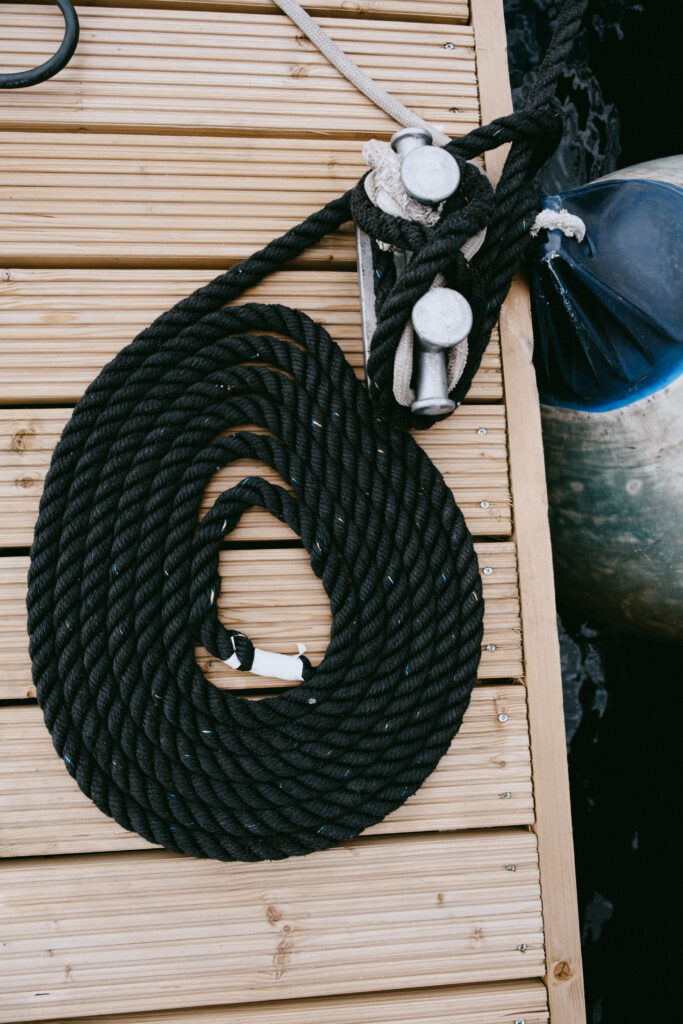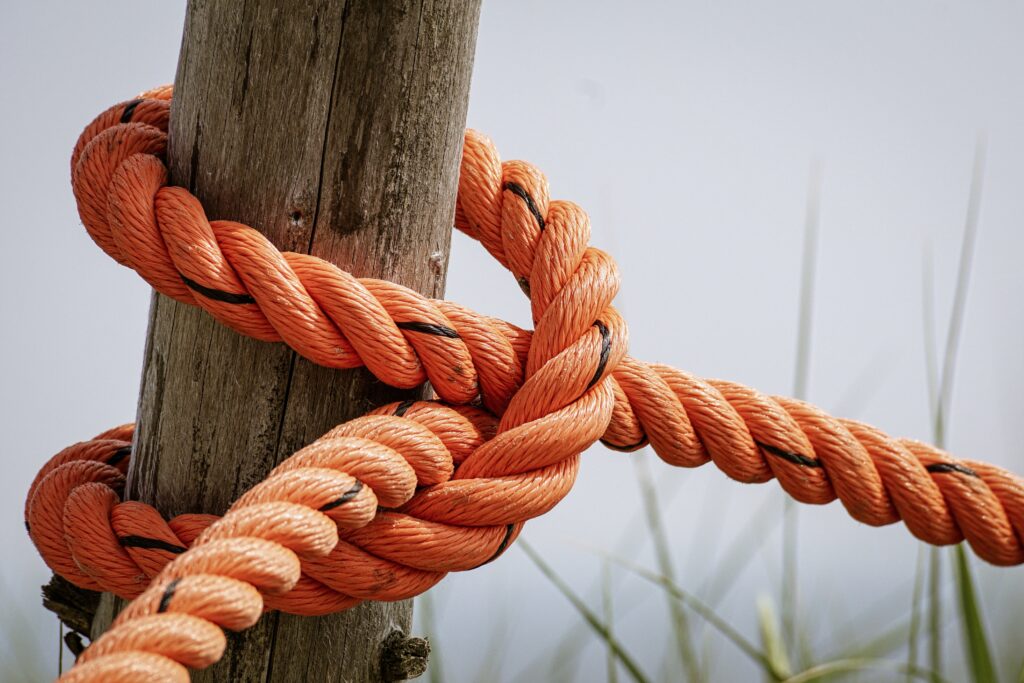In survival situations, knowing how to tie the right knots can mean the difference between life and death. Whether you find yourself in the wild, stranded on a tree branch during a flood, or setting up a shelter in the aftermath of a disaster, having the knowledge of essential knots is crucial. These knots serve various purposes, from securing shelters and gear to creating ladders and traps. In this article, we will explore some of the most important knots that every survivalist should know, equipping you with the skills to overcome the unforeseen challenges that may come your way.
Types of Knots for Survival Situations
Why Knowing Different Types of Knots is Crucial
When you find yourself in a survival situation, having knowledge of different types of knots can be a lifesaver. Knots are not only practical but also versatile tools that can help you in various situations. Whether you need to secure a shelter, build a trap, or create a makeshift tool, understanding the right knot for the job is crucial. Knowing different types of knots will not only make your life easier but will also increase your chances of survival.
The Importance of Knots in Survival Situations
Imagine you are lost in the wilderness, and you need to set up a shelter to protect yourself from the elements. Without the knowledge of the right knots, it would be nearly impossible to construct a sturdy and secure structure. Knots provide the necessary strength and stability to ensure that your shelter can withstand the forces of nature. Additionally, knowing how to tie proper knots can be useful when gathering food, setting up traps, or creating tools from available resources. Whether you are stranded in the mountains, lost at sea, or navigating through a dense forest, having the skills to tie different types of knots can make all the difference between life and death.
1. Basic Knots
Square Knot
The square knot, also known as the reef knot, is one of the most basic and fundamental knots to learn. It is commonly used for joining two ropes together or securing non-critical loads. The square knot is easy to tie and untie, making it an essential knot for various survival situations.
Clove Hitch
The clove hitch is a versatile knot that can be used for attaching a rope to a stationary object such as a tree or post. It is particularly useful for setting up shelters, creating makeshift clotheslines, or securing gear. The clove hitch is simple to tie and provides a quick and secure attachment.
Sheet Bend
The sheet bend is a reliable knot for joining two ropes of different diameters or materials. It is especially useful when you need to extend the length of a rope or connect ropes of varying thickness. The sheet bend is easy to tie and untie, making it an essential knot for survival situations that require rope manipulation.

2. Hitch Knots
Tautline Hitch
The tautline hitch is a practical knot for adjusting the tension on a rope. It is commonly used to secure tents, tarps, or hammocks, allowing you to easily tighten or loosen the line as needed. The tautline hitch is an excellent knot for survival situations where adaptability and flexibility are essential.
Trucker’s Hitch
The trucker’s hitch is a powerful knot for creating a highly tensioned line. It provides a mechanical advantage, allowing you to secure heavy loads or create a tight line for hanging food while camping. The trucker’s hitch is a valuable knot for survival situations that require strong and reliable tensioning.
Bowline
The bowline is a versatile knot with numerous applications in survival situations. It creates a secure loop that doesn’t slip or bind under load, making it ideal for tasks such as rescuing, climbing, or securing gear. The bowline is a must-know knot that can be easily tied even in stressful situations.
3. Loop Knots
Bowline on a Bight
The bowline on a bight is a variation of the bowline knot that creates two loops instead of one. It is commonly used for rappelling, ascending, or during rescue operations. The bowline on a bight provides a reliable and secure loop that can withstand heavy loads, making it an invaluable knot for survival situations.
Figure Eight Loop
The figure eight loop is a strong and secure knot that forms a fixed loop at the end of a rope. It is widely used in climbing, mountaineering, and rescue operations as it maintains its integrity under tension. The figure eight loop is an essential knot for survival situations where a reliable loop is necessary.
Prusik Knot
The Prusik knot is a friction hitch that allows you to ascend or descend a rope using another rope as a brake. It is commonly used in rock climbing, caving, and rescue scenarios. The Prusik knot provides a reliable and adjustable grip on the main rope, making it a valuable knot for survival situations that involve vertical movement or rescue operations.

4. Stopper Knots
Overhand Knot
The overhand knot is the most basic stopper knot that prevents a rope or line from slipping through a hole or eyelet. It is easy to tie and untie, making it useful for temporarily securing items or preventing the unraveling of rope ends. The overhand knot is a simple yet essential knot to know in various survival situations.
Double Overhand Knot
Similar to the overhand knot, the double overhand knot creates a larger and more secure stopper knot. It is commonly used when additional stopping power is required, such as preventing rope slippage or securing gear. The double overhand knot is a reliable stopper knot that can give you peace of mind in survival scenarios.
Ashley Stopper Knot
The Ashley stopper knot, also known as the Oysterman’s stopper, is a compact knot that provides a secure and reliable stopper for ropes. It is often used in sailing, camping, or any situation that requires a knot that won’t slip easily. The Ashley stopper knot is an important knot for survival situations where security is paramount.
5. Binding Knots
Square Lashing
The square lashing is a binding knot that is used to secure two or more poles together. It is commonly employed in building shelters, creating rafts, or constructing improvised tools. The square lashing provides a sturdy and durable connection, making it an invaluable knot for survival situations that involve construction or binding.
Round Lashing
The round lashing is another binding knot that is similar to the square lashing but creates a smoother and more rounded connection. It is often used when aesthetics or comfort is a consideration, such as constructing furniture or lashing materials for transport. The round lashing is a versatile knot for survival situations that involve securing objects together.
Diagonal Lashing
The diagonal lashing is a binding knot that is specifically designed to create a diagonal connection between two or more poles. It is commonly used in constructing tripod structures, creating emergency stretchers, or building improvised bridges. The diagonal lashing provides a secure and stable connection, making it a critical knot for survival situations that require complex structures.
6. Climbing Knots
Figure Eight Knot
The figure eight knot is the most common knot used in rock climbing, mountaineering, and other vertical activities. It forms a secure loop at the end of a rope and is easy to tie and untie, even after being subjected to heavy loads. The figure eight knot is an essential knot for survival situations that involve climbing or any vertical movement.
Figure Eight Follow-Through Knot
The figure eight follow-through knot is a variation of the figure eight knot that provides extra security by weaving the rope through the loop twice. It is the preferred knot for tying in to climbing harnesses and offers more redundancy in critical situations. The figure eight follow-through knot is a vital knot for survival scenarios that demand maximum safety.
Double Fisherman’s Knot
The double fisherman’s knot is a reliable knot for joining two ropes together, particularly when the ropes are of different diameters or materials. It is commonly used in climbing, hiking, or any situation that requires attaching or lengthening ropes. The double fisherman’s knot creates a strong and secure connection, making it an indispensable knot for survival situations that involve rope manipulation.
7. Fishing Knots
Improved Clinch Knot
The improved clinch knot is one of the most popular and reliable knots for tying fishing hooks or lures to the fishing line. It is easy to tie and provides a strong connection that resists slippage. The improved clinch knot is an essential knot for survival situations that involve fishing or securing food sources.
Palomar Knot
The Palomar knot is another highly recommended knot for fishing, particularly for attaching hooks, lures, or swivels to the fishing line. It provides excellent strength and reliability, even with heavier loads. The Palomar knot is a valuable knot for survival scenarios that require durable and secure fishing connections.
Uni Knot
The Uni knot, also known as the Duncan loop, is a versatile knot that can be used for various fishing applications. It is commonly used for attaching lures, hooks, or swivels to the fishing line. The Uni knot is straightforward to tie and provides reliable strength, making it a must-know knot for survival situations that involve fishing.
8. Rescue Knots
Munter Hitch
The Munter hitch, also known as the Italian hitch, is a versatile knot that can be used for belaying, rappelling, or creating a friction brake system. It allows for easy rope manipulation and provides a secure grip on the rope, making it an essential knot for rescue situations. The Munter hitch is a knot that every survivor should be familiar with.
Prusik Knot
The Prusik knot, mentioned earlier as a loop knot, is also a valuable knot for rescue scenarios. It can be used to create a friction grip on a rope, allowing for ascending or descending with another rope as a brake. The Prusik knot is a versatile and reliable knot that can be a lifesaver in emergency situations.
Grapevine Knot
The grapevine knot, also known as the double fisherman’s knot, is commonly used for joining two ropes together in rescue operations. It creates a strong and secure connection that is resistant to slippage. The grapevine knot is a crucial knot for survival situations that require secure and durable rope connections.
Conclusion
Practice Makes Perfect
Knowing different types of knots and how to tie them is essential for survival situations. However, it is equally important to practice these knots regularly to ensure that you can tie them quickly and efficiently, even under stressful conditions. By practicing these knots, you will become more confident in your abilities and increase your chances of success in survival scenarios.
Carrying Essential Knot-Tying Tools
While knowledge of different types of knots is crucial, having the right tools can also significantly enhance your knot-tying abilities. Consider carrying essential tools such as a high-quality knife, paracord, carabiners, and a small pocket guide on knot tying. These tools can make a real difference in survival situations, allowing you to efficiently tie and untie knots when you need them most.
Remember, in a survival situation, having the knowledge and skills to tie various types of knots can be the difference between life and death. So, take the time to learn and practice these knots, and you’ll be better equipped to overcome the challenges that nature throws your way. Stay safe and always be prepared!
